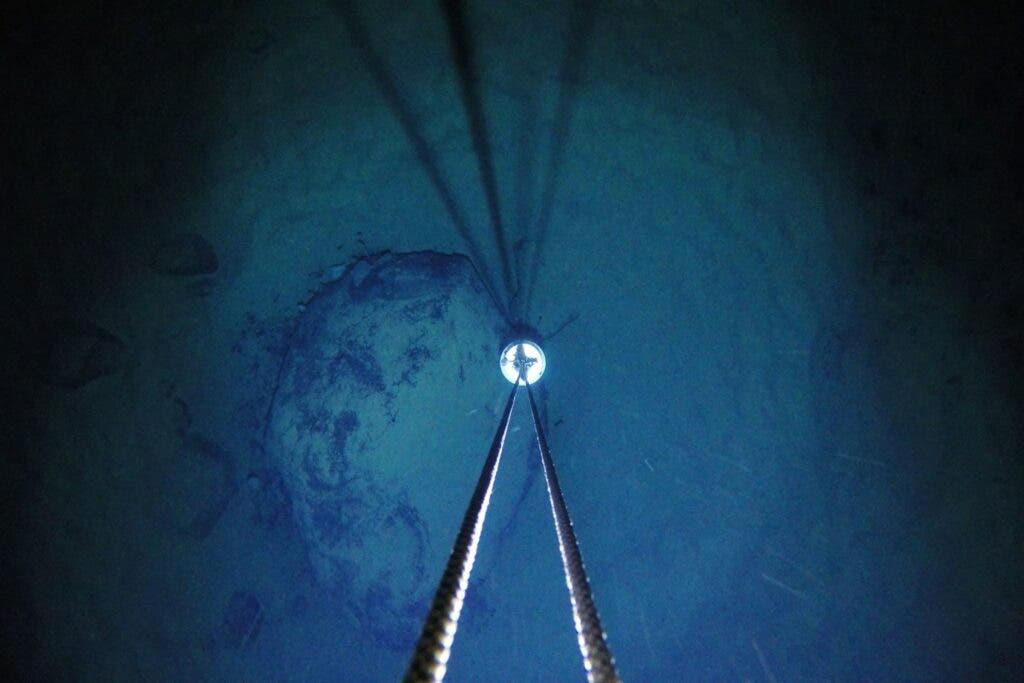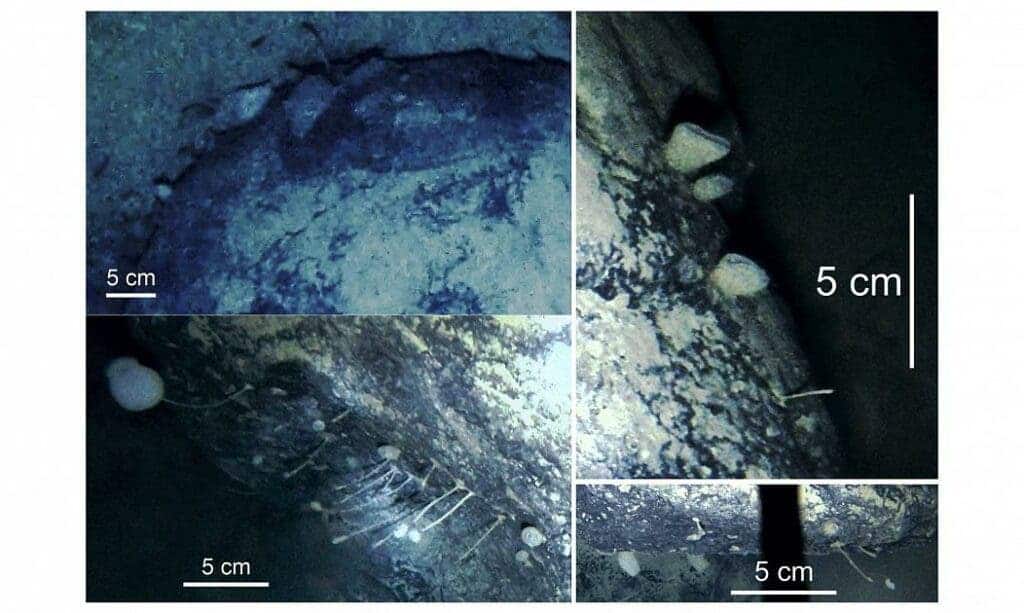
During yet another miserable, freezing day of fieldwork in Antarctica, geologist James Smith of the British Antarctic Survey dropped a super-long cable down a hole drilled through 900-meter-thick ice. The idea was to scoop some sediments from the seafloor below, a plan that utterly failed since the collection instrument hit a rock. But the cable also carried a GoPro camera, which stunned everyone who saw the footage. In it, they could see the rock was covered in something that should have had no business being there, namely life.
An accidental discovery of extreme life

Smith is no biologist, but he has colleagues at the British Antarctic Survey that are. When the entire team saw the footage showing a film on the rock, the biologists immediately recognized these must be lifeforms. Subsequent investigations showed 16 sponges, along with 22 yet unidentified animals, some of which look a lot like barnacles.
“This discovery is one of those fortunate accidents that pushes ideas in a different direction and shows us that Antarctic marine life is incredibly special and amazingly adapted to a frozen world,” says biogeographer and lead author, Dr. Huw Griffiths of British Antarctic Survey.
In 2017, scientists found a hidden ecosystem lurking 9.5 kilometers (6 miles) beneath the Mariana Trench — what may be the deepest traces of life on Earth. And although the water is extremely cold, oxygen is low, light is totally absent, and pressure can bubble up to hundreds of times that at sea level, approximately 25% of the estimated 8,700,000 species on Earth live in the ocean depths. So, what’s the big deal about discovering some tiny sponges under less than a kilometer of ice?
Although deep-sea creatures have to endure extreme conditions, lack of food isn’t one of them. Every creature that swims close to the surface, be them sharks or whales, will someday die, and when they do, their bodies sink down the water column. Creatures living below the water column feed on these animals, including those that live on the seafloor.
The spot where the geologists drilled for sediments in the Filchner-Ronne ice shelf is about 260 kilometers (160 miles) from the nearest edge of the ice shelf, where the ocean open begins and the nearest source of food ends.
According to Griffiths at the British Antarctic Survey, the only explanation for how these filter feeders survive is that they likely receive nutrients carried in the -2°C water by some yet identified mechanism. Perhaps the food is carried by currents, but the nearest up-current source of sunlight is about 600 kilometers (370 miles) away.
“From looking at the video it appears to be a filter-feeding community, obviously this community must be able to cope with less food than others elsewhere. There are no obvious signs of chemosynthesis, these sponges are not the typical hydrothermal vent or methane seep fauna and the water temperatures are very cold. As far as we know the most likely source of food is what washed in from beyond the ice shelf by the currents, but this requires further investigation,” Griffiths added in an email.
A wild, alternative explanation is that these sponges are, in fact, ancient. Some Antarctic glass sponges are known to be more than 10,000 years old, so perhaps these rock-hugging critters are similar.
Perhaps subsequent expeditions might get to the bottom of it all. Floating ice shelves are considered “the greatest unexplored habitat” in the Southern Ocean, so an investigation is bound to bear interesting findings one way or the other. But scientists will have to perform such investigations fast.
Global warming is closing the window of opportunity for studying unexplored ecosystems in Antarctica. As the region warms past a critical threshold, ice shelves such as Filchner-Ronne Ice Shelf, where this marine life was discovered, are bound to collapse into the sea.
In any event, the big takeaway is that life is even more surprising than we might give it credit for. Even in Antarctica’s harshest environments, there’s still room for life to thrive — and that’s pretty amazing.
“Ice shelves cover roughly a third of the Antarctic’s 5 million km2 continental shelf and the Ronne-Filchner Ice Shelf [where the creatures were found] covers around 420,000 km2, so these environments are surprisingly common but we know virtually nothing about them. Finding filter feeding animals so far from their food source shows us that life beneath ice shelves is more resilient and widespread than we expected.”
“If these communities turn out to be new species, only found under ice shelves then this would make them very vulnerable to climate change and ice shelf collapse, which could destroy their entire habitat in the future,” Griffiths concludes.
The findings appeared in the journal Frontiers in Marine Science.









